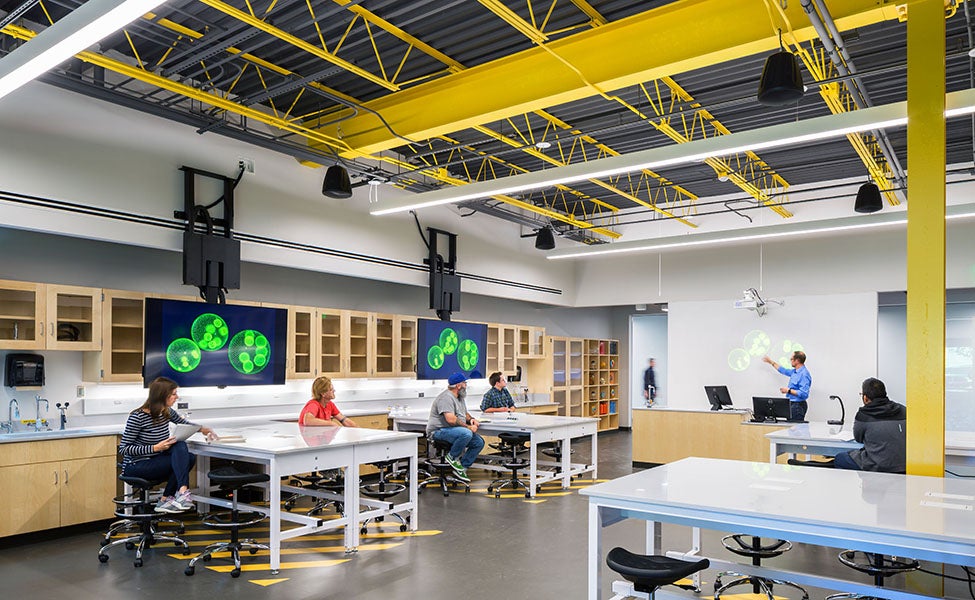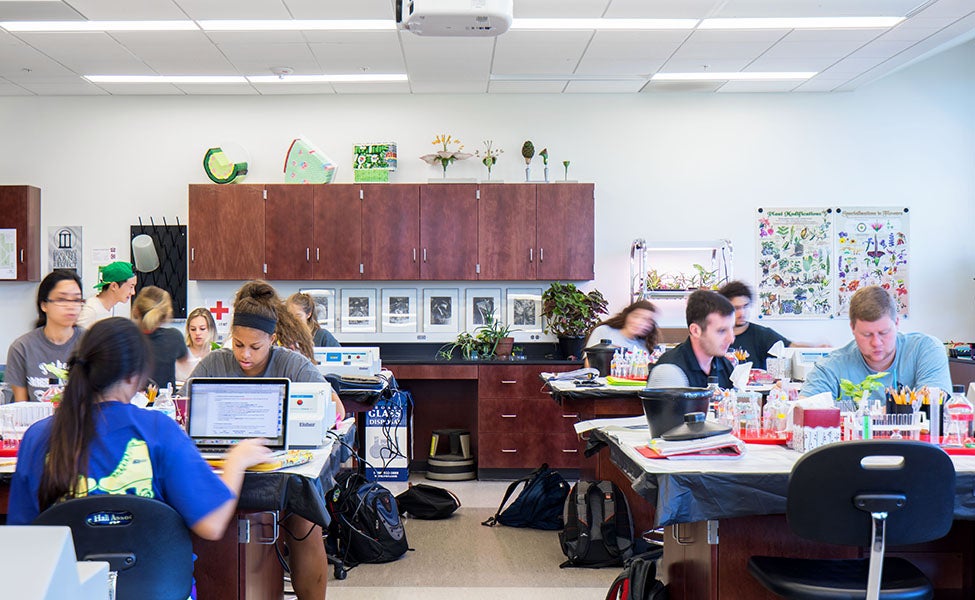
Designing for How We Learn: Maker Spaces and Instructional Laboratories
Maker spaces and instructional labs are exciting spaces for learning. The idea of “maker spaces” is a popular trend related to active learning. Originating in the non-academic community, maker spaces are loosely defined as physical locations or studios for hands-on experimentation, building prototypes and otherwise testing ideas. The maker space usually provides tools, the space to work and build and often expert advice, allowing people to work in a communal atmosphere.
Maker spaces are not intended to be used as a “teaching” environment; they are strictly a “learning” environment. Students typically follow their own ideas, testing their own concepts and creating on their own timetable, other than perhaps a competition deadline. They may be working with faculty or with other students, working on a project for a week or a semester and they may want to bring in industry leaders to evaluate their ideas.
A maker space is an incubator for budding ideas and entrepreneurs. As such, there are typically workspaces within a large open environment for students to work on individual projects. Common equipment is arranged in a way that is accessible and can be supervised, and often, the space has a manager there to help students with the equipment. Students typically must be trained and certified to work in the space and use the equipment. Maker spaces may include laser cutters, 3D printing and various shop equipment. There are no hard and fast rules about the design of a maker space. Generally, space should be as open as possible and include flexible utilities and appropriate equipment and space to meet with other students as well as with faculty, industry and community leaders.

Instructional laboratories have been a hallmark of science and engineering education; however, their form today should be based on our understanding of how students learn. The teaching lab is another space type that designers need to rethink rather than repeating layouts from the last century. Long peninsula benches have given way to groups of two or four, with instructors able to move quickly around the room. A popular concept is the “lecture lab,” where students can move quickly from lecture mode into the active application of techniques and concepts.
Lab sizes are based on the number of students per section and may range from 24 to 30 for a lower-level science lab and 12 to 20 people for an upper-level lab. Designers must understand that the teaching lab will have different materials used by the students in the lab throughout a semester, so a prep/storage room that is readily accessible is crucial. Materials and equipment will be brought into the lab for two weeks, for example, and then go back into the prep room for storage until their use next semester. Planning these prep and storage areas appropriately can add a great deal of flexibility to the use of the teaching lab itself.
Active learning laboratories should be carefully considered and planned due to their high cost to implement. Planning and designing maker spaces, teaching labs and other active learning spaces need to be based on the activities that will occur there. In an academic environment, if the students don’t use it and the faculty doesn’t support it, it is not cost-effective to build it. Eight Design Steps for a Maker Space is a good resource for identifying some of the questions you should ask before investing in these types of spaces.
See
The requirements for See are different for a maker space than for an instructional lab. A maker space is generally an open space by its nature. Students either sign up for workspace or use the space on an ad-hoc basis. Equipment such as 3D printers, saws and shop tools are provided, and instructors or monitors may be practitioners from industry as well as faculty or teaching assistants. Safety is paramount, so the maker space must be set up for equipment to be used in the most efficient and practical way that can be supervised. These spaces often need ventilation and gases and thus need to be thought of as a laboratory environment.
A teaching lab typically includes a few minutes at the beginning for a teaching assistant or instructor to illustrate the techniques or activities that the students will undertake. However, the bulk of the time is spent with the students working, often in pairs, to conduct the experiment. There is generally a whiteboard area where students can congregate at the beginning, but not a formal seating arrangement. It is important in a teaching lab that the instructor can see all the student workstations, to assure they can catch mistakes and quickly answer questions.

Hear
Frequently, the requirements for Hear are also less formal in maker spaces and teaching labs than in a classroom. By nature, using equipment in these spaces creates a louder learning environment. Where appropriate, hearing protection may be needed. There are generally acceptable limits for noise in a teaching laboratory, but these are not as stringent as in a classroom and provide for lab equipment such as fume hoods, etc.
Do
There are standards per student station for teaching laboratories, ranging from 40 to 80 square feet per student for different disciplines. This basic guideline must also be driven by the safe circulation of people, materials and waste, by the tools to be used in the space and by the required amount and type of utilities, support and storage. Storage space for many materials is critical for a maker space; prep and storage for instructional laboratories are also important to their function.
Our role as designers is to provide the space and ability for students to work safely with the proper tools and appropriate supervision. The space must accommodate the tools appropriately, maintain sightlines for safety and build in acoustics as required for the activities. And finally, these are the spaces that allow students to get that final rung on the ladder of learning, doing , to master the concept.
We know a great deal about these different types of learning spaces today. There are some simple truths that must be honoured if architects are to design and universities are to build educational facilities that respond accordingly.
First, students learn best when they can apply concepts immediately and in a hands-on environment. Second, universities need to provide students with opportunities to learn that they cannot get by themselves. That is the only way to remain relevant in the face of today’s plethora of available information and learning tools. Third, the nature of learning spaces needs to allow students to “see, hear and do” to help concepts stick in a way they will remember them. This means a tripartite melding of pedagogy, space and technology paired with thoughtful planning and design in all learning spaces.
Read more from Kim's Designing For How We Learn Series.
- How We Got Here
Our education team is constantly studying how we learn and how that informs how we think about designing space. - One Simple Mantra
"See + Hear + Do = Remember" is the mantra we apply when designing educational spaces. In this article, we explore each step in the process. - Lecture Halls
Applying the "See + Hear + Do = Remember" framework to lecture halls requires some exploration into how they will be used. - Classrooms
Active learning is prolific in today's classroom environments. We explore how to ensure our learning environments support it using the "See + Hear + Do = Remember" framework.


